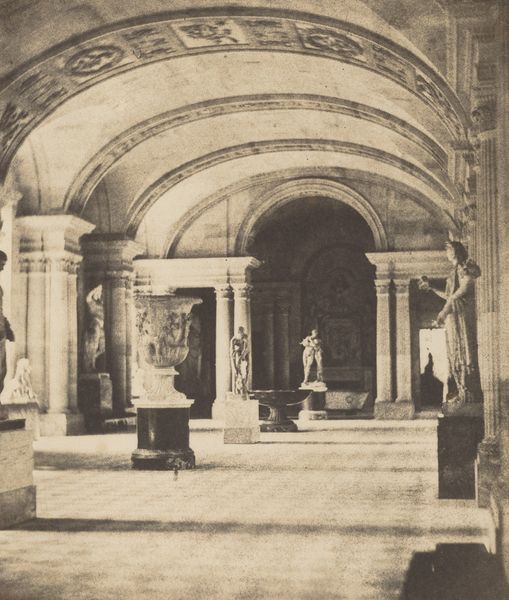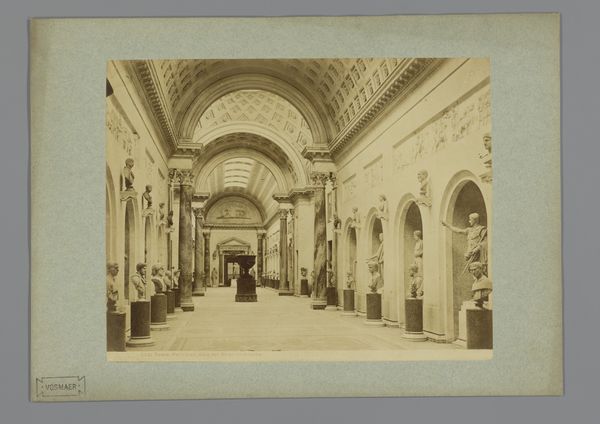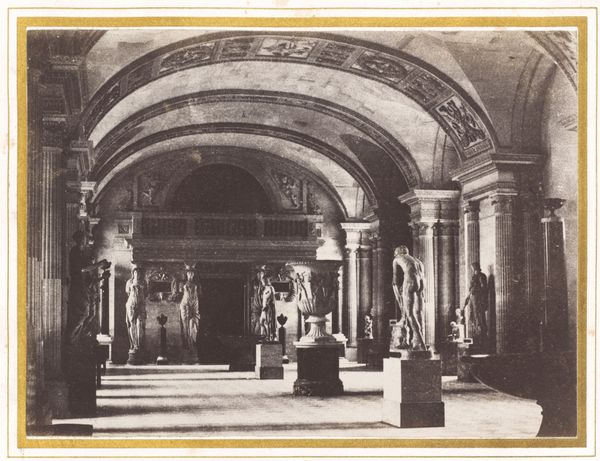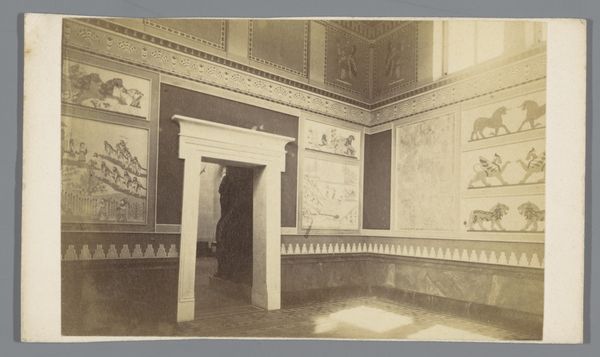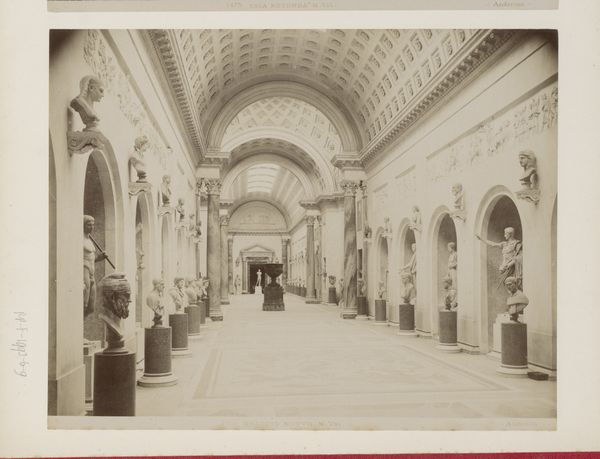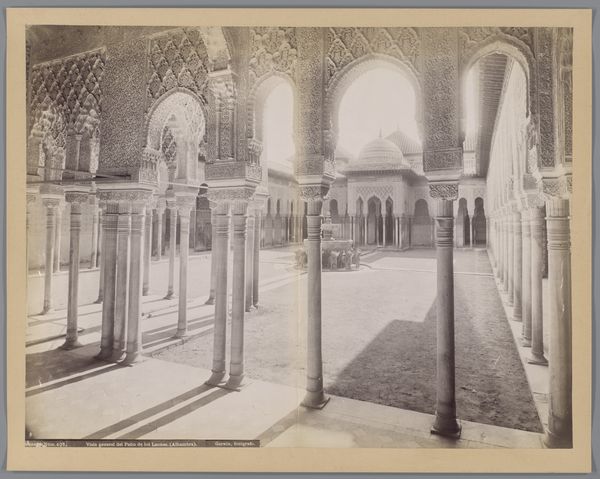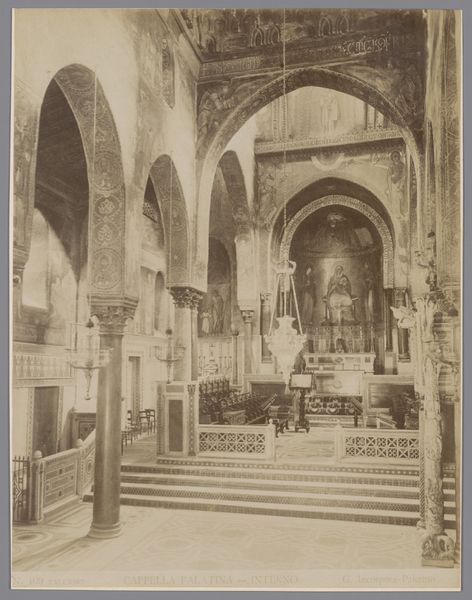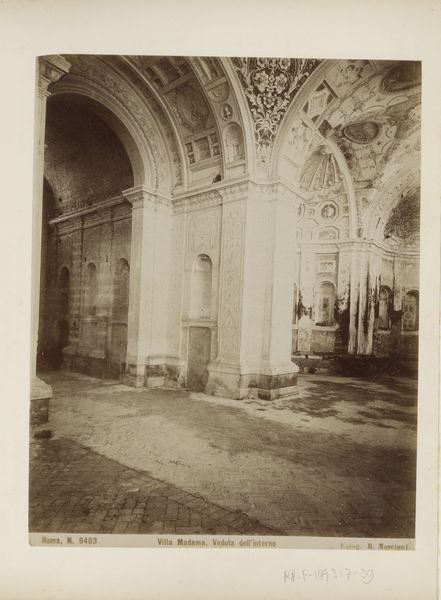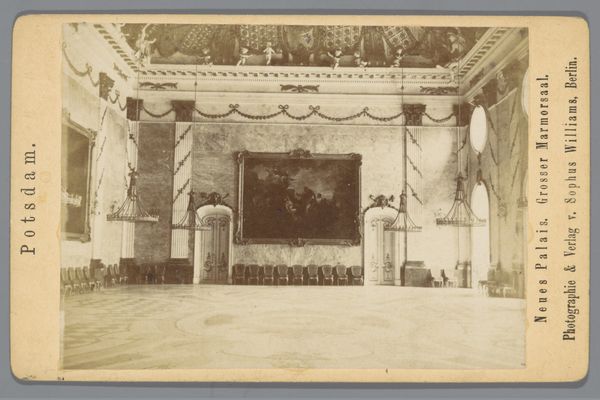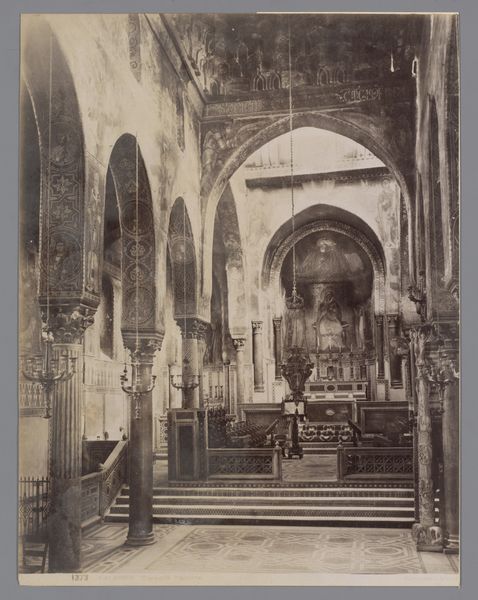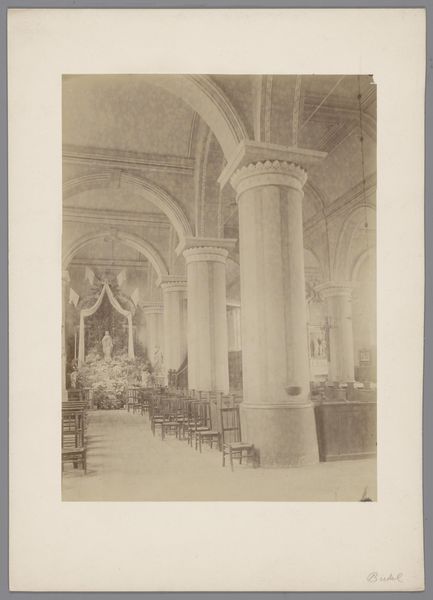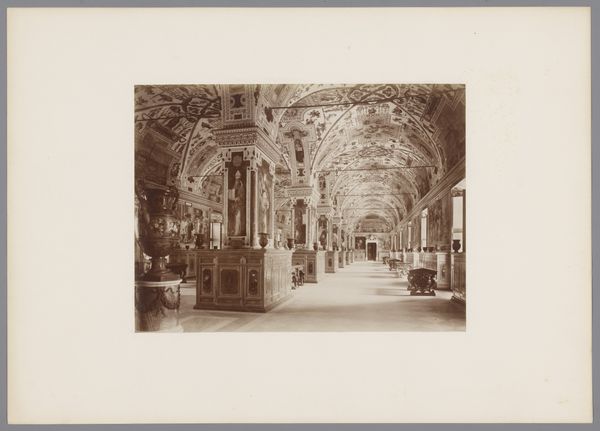
photography, gelatin-silver-print, architecture
#
portrait
#
landscape
#
photography
#
classicism
#
gelatin-silver-print
#
cityscape
#
architecture
Dimensions: height 62 mm, width 97 mm
Copyright: Rijks Museum: Open Domain
Curator: This gelatin-silver print, attributed to E. Reulbach, captures the "Römersaal" or Roman Hall inside the Glyptothek in Munich, sometime between 1855 and 1885. What stands out to you initially about this space? Editor: Well, I'm immediately struck by the almost theatrical staging. The perspective is intensely linear, drawing your eye deep into the hall. It presents such a structured, almost authoritarian point of view. Curator: It’s an intriguing interplay, isn’t it? The order inherent in classicism. Observe how Reulbach's choice of black and white enhances the architectural geometry and classical iconography throughout the image. Editor: Absolutely. You're reminded of the ways in which classical aesthetics were used by rising nation-states of the time to convey ideals of order, law, and control. The placement of sculptures—decontextualized, almost regimented—reinforces the message. Curator: The Glyptothek itself, built to house classical sculptures, aimed to evoke a lineage back to antiquity. And each of these sculptural figures bear certain meaning derived from classical tradition that still carry cultural importance today. The camera records not just form, but these layers of historical intention. Editor: That intention is critical, I think. To consider how the Glyptothek functioned as a repository for a constructed European identity and the subsequent legacy of photographic records. Look at how photography—then a fairly new technology—contributes to that project. The act of capturing it already elevates the status of this particular cultural performance. Curator: A great point. Photography, like classicism, can lend an aura of authority and truth. Reulbach uses it here to cement this vision of history, accessible and immutable. The light, the carefully arranged symmetry all contribute to a sense of enduring legacy. Editor: I think that understanding the encoding that is so apparent in this image lets you engage with what we, today, find both alluring and, maybe, deeply disturbing about that pursuit. The idea that there are legacies embedded into this photographic image really forces a conversation about visual history. Curator: Yes, it reminds us that images, no matter how seemingly objective, carry cultural baggage. Reflecting on it reveals how history gets memorialized, shaped, and inevitably, debated.
Comments
No comments
Be the first to comment and join the conversation on the ultimate creative platform.
